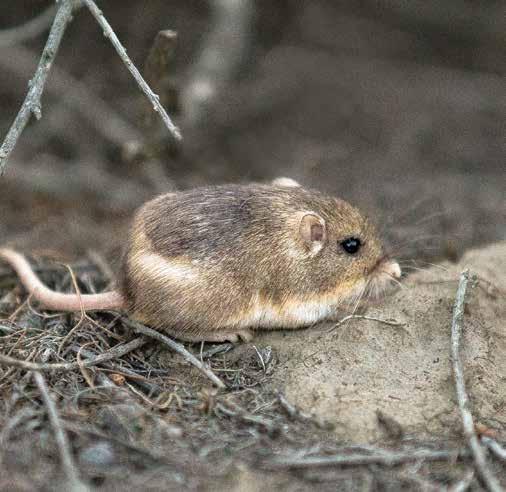
2 minute read
Southwest
Conservation Hub
Headquartered in a biodiversity hotspot, we’re proud to safeguard and celebrate the wildlife and ecosystems in our own backyard. The Southwest— a cross-border area spanning the southwestern United States and northern Mexico— sprawls from coasts to deserts, and incorporates diverse landscapes, including wetlands, forests, grasslands, and mountains. The distinct habitats of the Southwest are home to an array of wildlife found nowhere else on Earth. With projects across the region, we make conservation impacts by boosting populations and reintroducing threatened species, identifying and reducing threats to ecosystems, and using cutting-edge science and technology to monitor wildlife and native habitat.
Conservation Begins with Our Two Front Doors
All of our conservation work begins with the expertise honed from over a century of wildlife care at the Zoo and Safari Park, which are also the gateway to our Southwest conservation efforts.
A Future For Little Locals
We continue to work on establishing self-sustaining breeding populations of locally endangered western burrowing owls. This year, 27 burrowing owls bred at the Safari Park were reintroduced into protected native habitat. In total, about 100 birds have been reintroduced through the Burrowing Owl Recovery Program partnerships, including one pair rescued from the U.S.–Mexico border, who were reintroduced with their chicks.
1,000 ACRES
More than half of the Safari Park’s 1,800 acres is set aside as the Biodiversity Reserve—one of the last remaining areas of pristine, intact native coastal sage scrub and chaparral habitat in the region.

Representing the native stewards of our land, the San Pasqual Band of Mission Indians graciously blessed the sites in Rancho Jamul and Ramona where burrowing owls were reintroduced.

Swim Gym
To understand how to help young mountain yellow-legged frogs from the conservation breeding program thrive in native habitat, conservation scientists at the Safari Park created a special “exercise pool” with an artificial current. They found that if introduced at a young age, familiarity with the swift, stream-like setting boosted the frogs’ chances for survival after release. Discoveries like this are crucial to the long-term success of conservation programs.




Leaping Success
The mountain yellow-legged frog breeding season at the Safari Park was a huge success. More than 4,000 eggs were laid, and at least half were successfully fertilized— the best results in four years . In collaboration with our partners, more than 500 frogs and tadpoles were reintroduced. We were particularly heartened to find that frogs previously reintroduced by our teams are now breeding , bolstering the wild population of this critically endangered amphibian.
TINY MOUSE, BIG YEAR

In 2022, a record 117 critically endangered Pacific pocket mice from 31 litters were born under our care —a significant increase from 27 mice born in 2021. These pups will be reintroduced into native habitat in 2023. Although tiny, Pacific pocket mice act as crucial “gardeners” in their ecosystems, dispersing seeds and aerating soil. Conservation breeding is crucial to saving the species and protecting their native habitat.
Conservation Continues
California condors need safe, healthy environments to thrive, and our ongoing commitment to saving the species goes beyond breeding and reintroductions. A study that included SDZWA coauthors found that condors living off the California coast may ingest toxins such as DDT and PCBs when they feed on marine mammal carcasses. This is vital information as we continue to protect these icons of the Southwest and their native habitat.
40 Years Of Condors
Our collaborative work to recover and protect California condors has made great strides in 40 years. From just 22 individuals in the 1980s, today’s condor population numbers over 500 birds . The program has also pioneered landmark genetic analyses that now form the basis of all condor conservation breeding efforts, to ensure a genetically diverse and thriving population.


PARTHENOTE #3
This year, our Conservation Genetics team confirmed a third egg produced by a female condor without a male , building on our groundbreaking 2021 discovery of condor parthenogenesis. The latest discovery, from a bird at Idaho’s World Bird Center, indicates that reproduction without males may be relatively common in condors.










